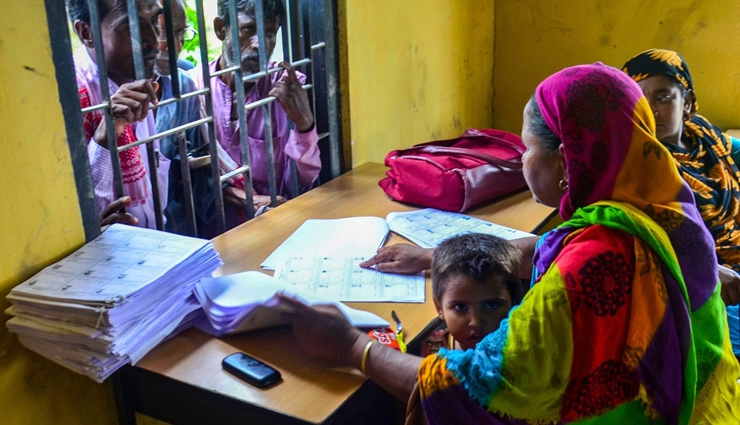What Is NRC And What Happens To 40 Lakh People Left Out In The Draft
By: Priyanka Maheshwari Tue, 31 July 2018 1:41:38

Assam released the second and the final draft of the state’s National Register of Citizens (NRC) on Monday which includes about 2.9 crore names as opposed to 1.9 crores of the first draft. As per the report now, over 40 lakh people will have to prove they are citizens of India. Assam is the first Indian state where the NRC is being updated after 1951, with March 24, 1971, as the cut-off date, to include names of ‘genuine Indian citizens’.
The NRC is an exercise, first carried out in 1951 to enumerate the citizens, their houses and holdings. Over the years there has been a demand from the indigenous Assamese groups to update the NRC. In Assam, which has seen waves of migration, first as a colonial province and then as a border state in independent India, this is a loaded issue. In 1979, about 8 years after the Bangladesh war, which led the wave of migration from across the border, triggered an ‘anti-foreigners’ agitation. The agitation ran parallel to an armed struggle by the United Liberation Front of Assam demanding a sovereign state for indigenous Assamese people. However, in 1985, the anti-foreigners agitation came to an end with signing of the Assam Accord which provided the regularisation of those who have entered the state before 1966. And those who entered the state between 1966 and 1971 would be deleted from electoral rolls and lose their voting rights for 10 years. Those who entered on or after March 25, 1971, on the eve of the Bangladesh war would now be declared as foreigners and will be deported.
The first pilot project of updating NRC was launched in 2010 which soon was halted after protest by the All Assam Minority Student’s Union. And in 2014, the Apex court ordered to complete the updating exercise process by January 31, 2016, through which the state missed the deadline.
Interestingly, in March last year, the Guwahati High Court dismissed the residency certificates issued by the gram panchayat and stated that it couldn’t be used as a link document connecting people born after 1971 with their ancestors. The move hit the most to women, especially married women. But the Supreme Court overruled the decision and allowed the women those who are categorised as “original inhabitants” and relying on such certificates made it to the first draft of the register, published on December 31, 2017. Earlier, the first draft had excluded 1.4 crore names. And now, the 40 lakh who have been left out of the final draft includes 2.48 lakh “D” voters.

The immediate process for those who are left out will start on August 30. The process will involve filing a new batch of forms which will be available from August 7 to NRC authorities. The process will end on September 28. Those who have applied before September 2015 can fill the claim form and others can make corrections to their names, age, address and other particulars which they have already submitted. Objection forms, flagging the inclusion of ineligible persons in the register, can also be submitted.
Meanwhile, as of now, the Supreme Court has not set a deadline for the publication of the final list. But as per the NRC coordinator Prateek Hajela it would be expected in a few months. And those who do not make it to the final list will have to fight cases in the Foreigners Tribunals of Assam. However, there are misgivings for in many instances they will again be submitting the same document which has been rejected in the initial rounds of verification.
What about the final report?
The next stage, for those left of the final list, will involve the Foreigners Tribunals. The quasi-judicial bodies were originally set up under the Illegal Migrants (Determination by Tribunal) Act of 1983. Those deemed to be foreigners are transferred to detention centres. Till now, there are six across Assam, carved out of local prisons. These so-called foreigners have languished for years in a legal limbo, separated from homes and families. While the state have declared them foreigners, there is no repatriation treaty under which they can be deported to Bangladesh. A long process of proving citizenship lies ahead. But Assam has also got sanction from the Centre to build the first standalone detention camp in the state, capable of housing 3,000 inmates.





